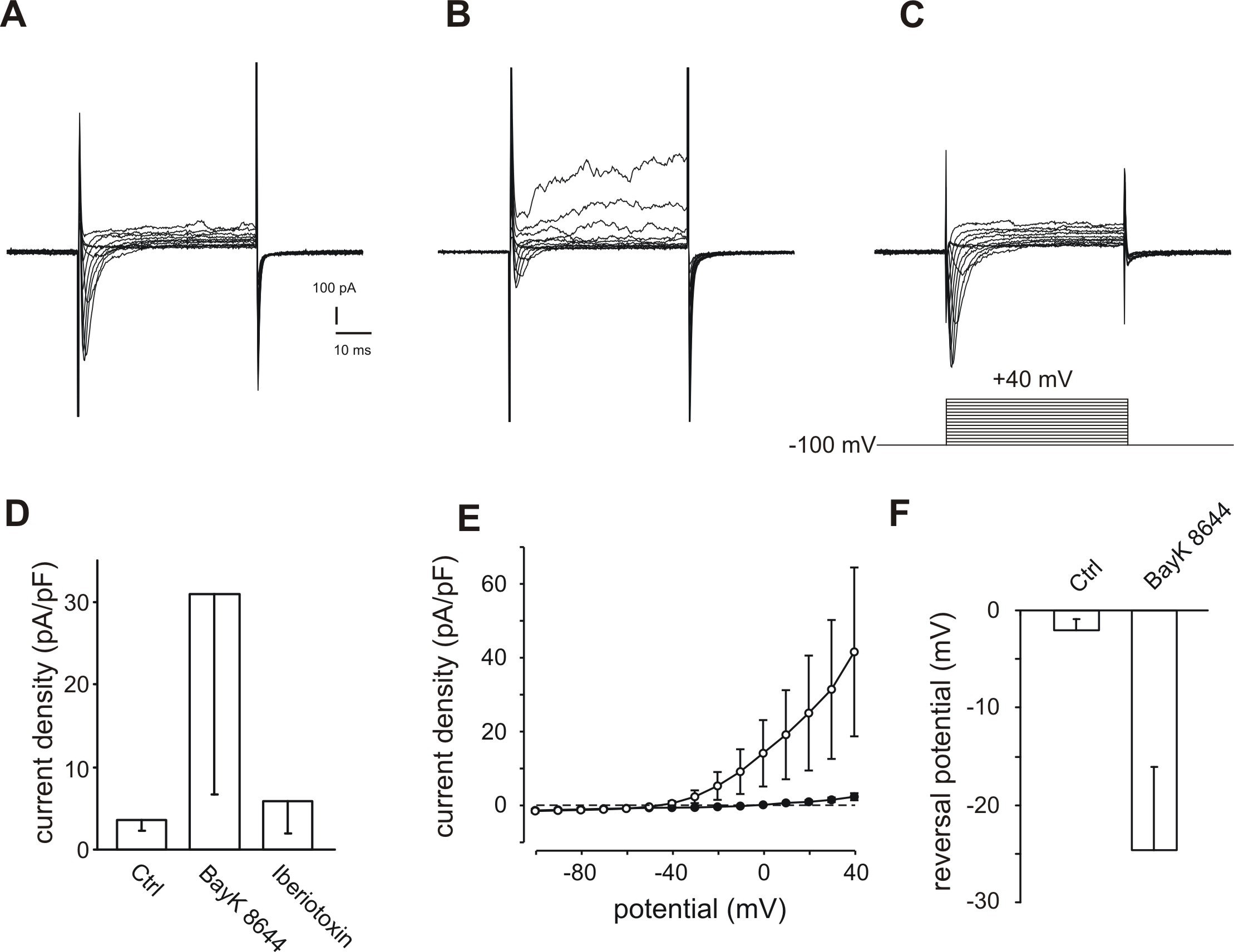Figure 5. Activation of BK channels in
ARPE-19 cells by the BayK 8644-induced activation of L-type Ca2+
channels. A: Control currents were evoked by 15 depolarizing
voltage steps of 50 ms duration with 10 mV increment before application
of BayK 8644 (holding potential −100 mV). B: The same cell
after application of 5 μM BayK 8644 displayed a considerable increase
of outward currents. C: The BayK 8644-induced outward currents
are blocked by the additional application of 100 nM iberiotoxin. Note
that in this cell a transient inward current activated by
depolarisation of the cell can be seen. This becomes smaller in the
presence of BayK8644 (B) because the current is counterbalanced
by the outward current which became larger. However, when the outward
current was blocked by additional application of iberiotoxin (C)
then the inward current shows in the presence of BayK 8644 an amplitude
which is larger (130% of control) than that before application of BayK
8644 (A). Thus, this inward current is most likely a current
through L-type Ca2+ channels. Since comparable strong L-type
currents were only rarely observed, this effect of the
BayK8644/iberiotoxin application was not further studied. D:
Mean current densities measured at +40 mV are considerably increased by
the application of BayK 8644. Abbreviations: Control current (Ctrl);
current densities after application of 5 μM BayK 8644 (BayK 8644);
current densities after additional application of 100 nM iberiotoxin
(iberiotoxin; n=3). E: The comparison of current-voltage
relationship of current densities before (filled circles) and after
(open circles) application of 5 μM BayK 8644 illustrates the
voltage-dependent current increases induced by BAYK 8644 application
(n=5). For illustration the zero current is indicated by a dashed line.
F: BayK 8644 application shifted the reversal potential to
negative potentials. The reversal potential was defined as the point of
intersection of the I/U-lines with the x-axes. I/U-lines were generated
by plotting the maximal currents evoked by the depolarizing steps in
the pulse protocol described in A against the potentials (n=5).

 Figure 5 of Wimmers, Mol Vis 2008; 14:2340-2348.
Figure 5 of Wimmers, Mol Vis 2008; 14:2340-2348.  Figure 5 of Wimmers, Mol Vis 2008; 14:2340-2348.
Figure 5 of Wimmers, Mol Vis 2008; 14:2340-2348. 